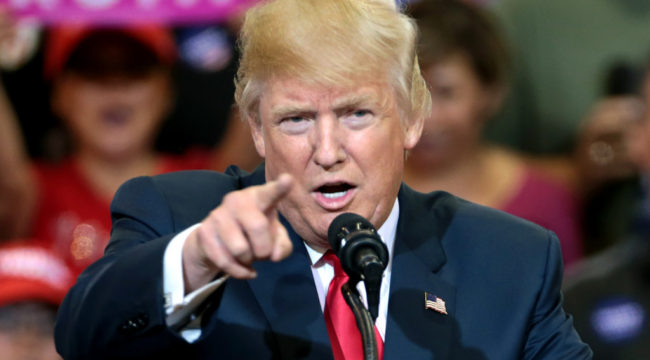Did Gold Really Fall Over Trump’s Speech?
This is getting tiresome. Do the media have to view everything through the prism of Trump now?
After we went to virtual press yesterday, gold gave up about half of the gains it had racked up since last Thursday. The Financial Times immediately began the hand-wringing: “Gold’s almost 10% advance this year will be in jeopardy should U.S. President Donald Trump’s key address to Congress on Tuesday reignite the dollar rally and prospect for higher interest rates.”
Trump and the media have a toxic codependent relationship. As a result, Trump has become an intrusive presence in our homes and our lives. The other day, my wife recalled an old Saturday Night Live sketch — likening Trump to John Belushi’s character as a houseguest who overstayed his welcome with Jane Curtin and Bill Murray…

The Thing That Wouldn’t Leave
A few weeks ago, the president basked in this phenomenon. “One of the things that I heard this morning in watching the news was that — amazingly, it’s never happened before — that politics has become a much bigger subject than the Super Bowl. This is usually Super Bowl territory, and now they’re saying that the politics is more interesting to people.”
How profoundly depressing. Government should be small and inconspicuous, freeing us up to think more about our families, our neighbors, our spiritual existence — and, yes, the Super Bowl.
But on this day, we’re sucked in regardless: The conventional wisdom contaminating the FT’s gold-Trump story is such that we’re compelled to respond and shoot it down.
“What’s the best way to forecast markets in the age of Trump?” asks Jim Rickards rhetorically.
“The answer is don’t try to forecast the next policy move. Focus instead on the reaction functions. This method resembles martial arts. Your opponent may come at you from the left or right. In either case, don’t resist your opponent’s thrust. Instead, dodge the attack and watch your opponent stumble as a result.”
Jim points us to the following Wall Street Journal excerpt based on a recent interview with Treasury Secretary Steve Mnuchin…
Mr. Trump has expressed frustration that other countries — most notably China — have used weak currency policies to boost exports. The comments during his campaign and since his election carried with them an implication that the new administration might favor a weaker currency to support the U.S. trade position.
Mr. Mnuchin avoided taking confrontational positions on the dollar. He said the strong U.S. dollar was a reflection of confidence in the U.S. economy and its performance compared with the rest of the world and was a “good thing” in the long run.
“So which is it?” says Jim. “A strong dollar or a weak dollar?
“Trump has complained bitterly about China, Japan and Germany being currency manipulators. At the same time, he has spoken positively about possible rule-based appointees to the Federal Reserve, including Kevin Warsh and Dr. Judy Shelton. The problem is that all rule-based methods of monetary policy point to higher rates, which will make the dollar stronger despite Trump’s complaints. Again, which is it? A strong dollar or a weak dollar?”
It pays to examine both outcomes — and identify an asset that will prosper regardless.
“If Trump pursues a weak dollar policy,” Jim tells us, “that has clear inflationary consequences, which is good for gold and the euro.
“On the other hand, if Trump pursues a strong dollar policy, that will almost certainly lead to a Chinese maxi-devaluation and to an emerging-market dollar-denominated debt crisis. That could be a short-run head wind for gold, but as crisis conditions take hold, gold will benefit from a flight to safety.
“The point is we can foresee higher gold prices under both strong and weak dollar scenarios. The result is the same — although the paths are different based on initial conditions.
“You should be like the martial artist who foresees how an opponent can stumble regardless of the direction of the initial thrust.”
How about that? Gold’s already recovered most of those losses from yesterday that got the Financial Times all hot and bothered.
At last check, the bid has recovered to $1,257. And you can’t chalk up that move entirely to dollar weakness; the dollar index is off only modestly at 100.9.
The major U.S. stock indexes are yet again moving microscopically; the Dow has shed two points as we write and rests at 20,835. That said, we’re the last to dismiss the possibility of a teensy reversal of that move so the media can tout A RECORD CLOSE BY THE DOW FOR 13 STRAIGHT DAYS!
The day’s economic numbers are underwhelming. The Commerce Department took its second guess at fourth-quarter GDP; it came in below expectations at an annualized 1.9%. The trade deficit came in bigger than expected at $69.2 billion; imports surged, exports shriveled.
Thanks for reading,
Dave Gonigam
for The 5 Min. Forecast



Comments: